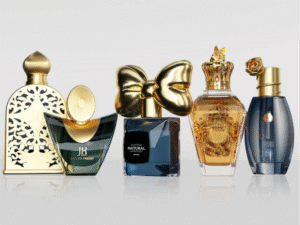Choosing the right beer bottle is an essential aspect of both homebrewing and commercial beer production. The type of bottle you select can significantly influence the preservation of flavor, carbonation, and overall presentation of your beer. This guide will introduce you to the various types of beer bottles available and highlight key factors to consider when making your selection. Whether you’re a homebrewer looking for the perfect container for your craft creations or a brewery aiming to make a lasting impression with your packaging, understanding the nuances of different beer bottles is crucial.

I. Types of Beer Bottles
When choosing the right beer bottle, it’s essential to understand the various types available:
1.1 Longneck Bottle:
Longneck bottles, characterized by their tall and narrow necks, are a staple in the beer industry. Their design not only provides a classic aesthetic but also helps retain the beer’s carbonation and flavor. These bottles typically hold 355 ml (12 oz) and are suitable for a wide range of beer types, making them a versatile choice for both commercial breweries and homebrewers.

1.2 Stubby Bottle:
Stubby bottles feature a short, thick neck and a compact design, making them easy to store and transport. They usually come in 330 ml (11.2 oz) or 355 ml (12 oz) sizes. Their retro appearance has regained popularity, and their sturdy construction ensures durability. Stubby bottles are particularly favored for their ease of handling and space efficiency.

1.2 Swing Top Bottle:
Swing top bottles are equipped with a metal clamp and a rubber seal, making them an excellent option for homebrewing. Typically holding around 500 ml (16.9 oz), these bottles are reusable and provide a secure seal that helps maintain the beer’s freshness and carbonation over time. Their distinctive flip-top mechanism also adds a touch of traditional charm.

1.3 Bomber bottles:
Bomber bottles are larger, usually holding 650 ml (22 oz) or 750 ml (25.4 oz), and are often used for high-end or specialty beers. Their substantial size makes them perfect for sharing during special occasions. Bombers are valued for their robust construction and ability to highlight premium beers, offering a substantial and memorable drinking experience.

1.4 Growler:
Growlers are large containers, typically available in 1-liter or 2-liter sizes, designed for beer takeout and sharing. They come with secure sealing caps that keep the beer fresh for extended periods. Growlers are ideal for those who want to enjoy draft beer at home or bring their favorite brews to gatherings, combining convenience with the ability to maintain beer quality.

2.Considerations for Buying Beer Bottles
Purpose:
Determine if the bottles are for homebrewing, commercial sales, or collection. Different purposes have varying requirements. For instance, homebrewing often needs bottles with good seals and reusability, while commercial sales focus on aesthetics and brand display.
Material and Quality:
The thickness and quality of the glass affect the bottle’s durability and safety. High-quality, pressure-resistant glass bottles ensure the beer remains intact during storage and transport.
Capacity and Shape:
Choose the appropriate capacity and shape based on the type of beer and drinking occasion. Longneck bottles are suitable for everyday drinking, swing top bottles for homebrewing and small batches, while bomber bottles and growlers are great for parties and sharing.
Sealing:
The sealing capability of the bottle cap is crucial for preserving the beer. Swing top bottles and growlers generally have excellent seals, whereas longneck and stubby bottles require high-quality caps.
Design and Brand Display:
For commercial sales, the design and appearance of the bottle are vital. Unique bottle designs can enhance brand image and attractiveness, and the transparency and color of the glass can influence consumer decisions.
Environmental Sustainability:
Consider choosing recyclable and reusable glass bottles to reduce environmental impact. Glass bottles have a high recycling rate, making them an eco-friendly packaging choice.
Price:
Select bottles according to your budget. While high-quality bottles may be more expensive, they offer greater value in terms of long-term use and brand image.

Conclusion
When choosing beer bottles, understanding the different types and their characteristics is the first step. By considering purpose, material, capacity, sealing, design, sustainability, and price, you can select the most suitable beer bottles for your needs. Whether for homebrewing or commercial sales, the right beer bottles can significantly enhance the beer drinking experience, making it more enjoyable and memorable.



